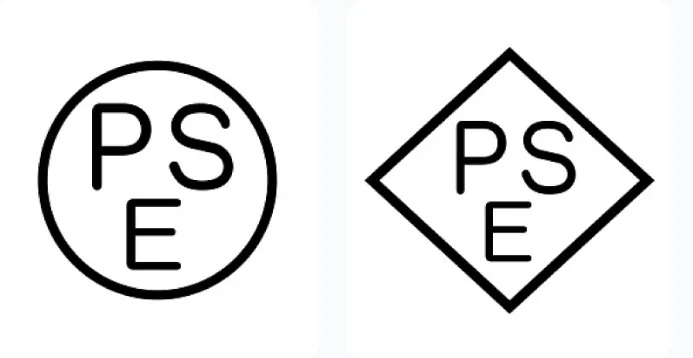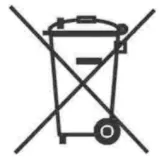
What is Machinery CE Certification?
Overview of Machinery CE certification:
Since January 1, 1995, the European Union has enforced Machinery Directive 89/392/EEC, requiring all machinery exported to the EU market to undergo CE certification and bear the CE mark, symbolizing compliance with EU safety standards. The current Machinery Directive 2006/42/EC has been in effect since December 29, 2009.
Directives Involved in Machinery CE Certification:
1. Original Machinery Directive: Directive 98/37/EC, effective from August 12, 1998, and replaced on December 28, 2009, by Directive 2006/42/EC.
- Under this directive, standard en60204-1:1997 was replaced by EN60204-1:2006 on June 1, 2009, specifying general requirements for machinery electrical equipment safety (based on IEC60204-1:2005 (modified)).
2. Current Machinery Directive (2006/42/EC) - MD
3. low voltage directive (2006/95/EC) - LVD
4. Lift Directive (95/16/EC) for passenger lifts
5. Gas Appliances Directive (90/396/EEC) for internal combustion engines
6. Pressure Equipment Directive (97/23/EC) - PED
7. Explosion Protection Directive (94/9/EC) - ATEX
Necessary Directives for CE Certification of Machinery Exports to the EU:
1. Low Voltage Directive (LVD) - Directive 2014/35/EU: Ensures the safety of low-voltage equipment. It applies to electrical equipment operating with voltages between 50V and 1000V AC or 75V and 1500V DC, requiring comprehensive safety design to prevent hazards.
- Summary: Electrical equipment with operating voltages within these ranges must undergo lvd certification for ce marking.
2. Electromagnetic Compatibility (EMC) Directive - Directive 2014/30/EU: Ensures equipment operates within electromagnetic compatibility limits, avoiding interference with or from other devices.
- Summary: All powered products requiring CE certification must comply with EMC requirements.
3. Machinery Directive (MD) - Directive 2006/42/EC: Covers machinery, grouped machinery, and interchangeable equipment. Machinery without power typically needs only MD certification, while powered machinery generally also needs LVD certification for safety.
Types of Machinery for CE Certification:
The certification processes vary for general machinery and dangerous machinery, with costs, complexity, and steps differing significantly. Appendix IV of the MD lists high-risk machinery types, which require special CE certification from designated bodies.
Common Standards for Machinery CE Certification:
- A-Type Standards (basic and general standards)
- EN ISO 12100: Addresses machinery safety, basic concepts, and general design principles.
- EN 60204-1: Includes requirements for electrical safety, with additional MD assessments.
- B-Type Standards (for specific product aspects)
- EN 811: Safety distances to prevent lower limb access to danger zones.
- EN 294: Safety distances to prevent upper limb access to danger zones.
- EN 349: Minimum gaps to avoid body part crushing.
- C-Type Standards (specific product standards, e.g., food processing machinery, packaging machinery, machine tools)
Examples of Machinery Standards for CE Certification:
- Metal Cold Processing Machinery: EN692 (mechanical presses), prEN693 (hydraULic presses)
- Printing and Paper Machines: prEN1010 (printing machines), prEN1034 (paper machines)
- Plastic and Rubber Machinery: EN201 (injection molding machines), EN289 (compression molding machines)
- Packaging Machines: EN415 series
- Food Processing Machines: EN1678 (vegetable cutting machines), EN1974 (slicers)
- Leatherworking Machines: EN972 (reciprocating machines), EN930 (grinding and polishing machines)
- Woodworking Machines: EN848 (shaping machines), EN859 (planing machines)
Testing Requirements for Machinery CE Certification:
Tests include ground continuity, leakage current, insulation resistance, loop, withstand voltage, residual voltage, and functionality testing of electrical safety features.
Scope of Machinery CE Certification:
The directive applies to a broad range of machinery products and safety components sold in the EU, including wood processing machinery, metal cutting machines, forging machinery, tractors, rubber and plastic machinery, packaging machinery, lifting and transport equipment, construction machinery, food processing machinery, heat treatment equipment, underground mining machinery, printing and papermaking machinery, casting machinery, washing machines, compressors, internal combustion engines, leather processing machines, and fire equipment.
Machinery ce certification process:
1. The manufacturer or designated lab submits an initial application.
2. The applicant completes the CE-marking application, submits the product manual, technical documents, and potentially a sample machine.
3. The lab identifies inspection standards, tests, and provides a quotation.
4. The applicant provides samples and technical documents, pays fees, and testing commences.
5. The lab reviews technical documentation and conducts product testing. If issues arise, modifications are requested, and additional fees may apply.
6. Once approved, the lab provides a test report, technical construction file (TCF), and ce conformity declaration.
Documents Required for Machinery CE Certification:
- Company information, product specifications, assembly diagrams, user manual, parts list, testing data, installation and operating environment, EU representative details, and quality control system documentation (e.g., ISO9000 certification).
Typical CE Certification Timeframe:
The certification duration depends on the machinery type, complexity, necessary modifications, and the readiness of technical documentation. Generally, the process can range from 5 days to a month, depending on the certifying body.
ce certification costs:
Certification costs vary, influenced by the certifying institution, with European institutions generally commanding higher fees due to greater market recognition.
Relevant Regulations for Machinery CE Certification:
All machinery must comply with ISO 12100, which outlines fundamental design, risk assessment, and risk reduction principles. Additional standards apply based on specific machine features, such as ISO 13849 for emergency stop devices and IEC 60204 for electrical equipment.
Email:hello@jjrlab.com
Write your message here and send it to us
 What is Amazon TIC and How Can Sellers Achieve Com
What is Amazon TIC and How Can Sellers Achieve Com
 2026 Battery UN38.3 Certification (Test Report) &a
2026 Battery UN38.3 Certification (Test Report) &a
 What is the IEC 62680 Standard? Compliance Interpr
What is the IEC 62680 Standard? Compliance Interpr
 Amazon Japan December Compliance Requirements
Amazon Japan December Compliance Requirements
 How to Check a CPSC-Accepted Laboratory?
How to Check a CPSC-Accepted Laboratory?
 WEEE Registration for Waste Electrical &Electr
WEEE Registration for Waste Electrical &Electr
 MSDS Chemical Safety Testing
MSDS Chemical Safety Testing
 What Are the Differences Between UK REACH and EU R
What Are the Differences Between UK REACH and EU R
Leave us a message
24-hour online customer service at any time to respond, so that you worry!




